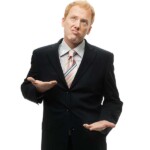
Is I-CAR Still Relevant? A Q&A With CEO John Van Alstyne
Published in Hammer & Dolly – Thomas Greco Publishing
Training. Every profession changes and requires ongoing education to some degree, but these days, few industries are experiencing an incessant flux of advancing technology quite as dynamic as auto body shops have seen in recent years…which experts predict will continue for some time.
 The best-known training option for collision repairers – right now – is I-CAR (the Inter-Industry Conference on Auto Collision Repair). As “an international not-for-profit organization dedicated to providing the information, knowledge and skills required to perform complete, safe and quality repairs,” I-CAR’s mission is to “deliver increasingly accessible, on-demand and relevant education, knowledge, services and solutions for the collision repair inter-industry.”
The best-known training option for collision repairers – right now – is I-CAR (the Inter-Industry Conference on Auto Collision Repair). As “an international not-for-profit organization dedicated to providing the information, knowledge and skills required to perform complete, safe and quality repairs,” I-CAR’s mission is to “deliver increasingly accessible, on-demand and relevant education, knowledge, services and solutions for the collision repair inter-industry.”
According to their website, “Ongoing changes in OEM technology, materials, manufacturing capabilities and standards make I-CAR more relevant than ever to the collision repair Inter-Industry.”
But is that true?
After hearing several auto body professionals cast aspersions on I-CAR’s relevance, value and motivations, Hammer & Dolly reached out to I-CAR CEO and President John S. Van Alstyne, who agreed to discuss some of the concerns shops have been voicing.
Hammer & Dolly: I-CAR has been making a lot of waves lately. You recently opened the Chicago Technical Center, and at the Society of Collision Repair Specialists’ (SCRS) recent meeting, Bud Center (I-CAR) mentioned soliciting industry feedback as part of efforts to enhance your curriculum. How is I-CAR using their customers’ feedback to make training more specific, detailed and relevant?
John Van Alstyne: I-CAR develops its curriculum in close collaboration with the inter-industry, significantly including collision repair shops, through our Voice of the Customer (VOC) processes. We engage members of the collision inter-industry (repairers, OEMs, insurers, suppliers, services and educators) to create loops for input and feedback. Through our Industry Knowledge and Skills protocol, we determine whether a course is needed, consider credentialing impact and build or update the course. Industry professionals help us test and pilot the new course for quality and relevancy before its launch.
At the end of 2019, we launched a complete overhaul of our educational program, developed directly based on feedback and input from the industry to ensure current relevancy, eliminate course-to-course redundancies and increase efficiencies through course design and new delivery methods with the goal of improving the overall student experience. We engaged different stakeholders, including a wide cross-section of SCRS shops and others across the country, to review our intended program and course adjustments – and we made significant enhancements to our previous offering.
We’re requiring more online courses, less classroom time and more in-shop training focused on the increasing number of skills relevant to complete, safe and quality repairs today and tomorrow. For a typical shop of nine employees in the four key roles (Structural, Non-Structural, Estimator, Refinish), the former curriculum would have required 236 hours’ worth of non-skills courses to reach ProLevel® 3, but by tightening efficiencies, we’ve reduced that time to 139 hours, allowing technicians to learn what they need to know with less impact to the shop workflow. Skills courses increase that time – and yes, we’ve added more, including MIG brazing and spot welding, at the industry’s demands. Our curriculum has been driven by advances in vehicle technology and repair methods, so we provide more training in the skills needed, while we cover the other knowledge areas in a much more efficient way to save time for busy shops.
It’s also important to recognize that a single course is not representative of an entire portfolio or complete credential. Our program is designed to progressively and logically build knowledge and skills, equipping people to develop and do the right things. Our 2019 redesign implemented the foundational principle of “recognizing existing knowledge” before jumping into training. Technicians accrue knowledge through experience and training, whether with I-CAR or our Alliance partners, so we maintain their historical records, and since 2019, we now get direct data feeds from our Alliance partners. This combined history gives us the starting point for the technician and shop journey to Platinum™ ProLevel 3 and thus shops’ path to Gold Class. We also offer “In-Shop Knowledge Assessments” where an I-CAR assessor meets with students in-shop and extends credit for ProLevel 1 knowledge areas the student demonstrates competency in. This can shorten the timeline to Platinum and Gold Class, while ensuring we minimize the need for potentially redundant training.
H&D: The biggest complaint we’ve heard from shops is that obtaining I-CAR Gold Class is too expensive and lacks value for the investment being made since I-CAR doesn’t publish a list, insurers don’t seek out Gold Class shops and consumers don’t know the difference. How do you respond to shops’ belief that I-CAR training is too expensive?
JVA: Over the past decade, the cost to repair has gone up for a number of reasons, largely related to advancing technology – and the industry’s interest in complete, safe and quality repairs for the ultimate benefit of the consumer. The cost of training has increased because of the same dynamics. Our actual pricing has not gone up…in fact, it has effectively gone down in most cases! We now offer an UNLIMITED training subscription option (excluding skills courses), allowing all shop employees to train as much as they wish and mitigating the risk of extra spending due to technician turnover – a cost savings for the shop while building broader shop-wide competencies. That said, there’s a different mix of courses with different pricing for online, classroom and skills courses, all of which relate directly to the associated costs for delivering that course. We require more skills courses that are taken in the shop to provide that hands-on training that techs need specific to their role.
Another factor impacting cost is the level of training now required. Whereas we previously only required one person to be credentialed in each of the four key roles (and one person could hold all four), the inter-industry deemed this inadequate, and we now require credentialing at a higher level: 100 percent of structural technicians and 50 percent of estimators, non-structural and refinish techs; one person may hold no more than two roles. So, while our pricing has improved, the total cost is up; however, benchmarking against similar educational programs indicates that we’ve stayed very competitive, and we remain focused on making it as affordable as possible.
Our informational services through Repairability Technical Support (RTS) are free to those who train with I-CAR. Also, we absolutely do publish a list of Gold Class shops
(bodyshopology.com), which is used by insurers and OEMs to research for potential network additions. Over the years, we’ve collaborated with multiple OEMs to help them identify, engage with and build their networks by virtue of our Gold Class population, which today numbers just under 9,000 shops in the US.
H&D: Shops are saying the opposite: They claim that the costs have increased, specifically for the welding program.
JVA: That’s true; the cost of the welding program has gone up, largely due to the level of training. Our 2019 updates included a revamp to our welding program, decreasing the period of reverification from five to three years since the five-year period was deemed too long given learning retention, age and health which can all impact welding quality. But after taking the base course, reverification is a simpler process, at a significantly lower price point (compared to taking the entire course again, as formerly required). Shops will also enjoy an associated savings from a production time standpoint since the reverification course is shorter, but shops likely aren’t fully seeing that yet. We did increase the base one-student price to cover our cost, but the upcharge for extra students dropped by 50 percent. As a result, for our average Gold Class shop with two structural techs, the cost to train both did not change.
Implementing “scaling of training levels” in 2019 also impacted welding competencies required. Before, only one structural technician in a shop needed to be certified; now, 100 percent of a shop’s structural technicians must receive and maintain welding certifications for a shop to achieve or maintain Gold Class status. So, depending on the size of the shop, it may be more expensive, but VOC participants took that into consideration and determined that it was more important to elevate the level of training in collision shops. Repairers and OEMs advocated for scaling to ensure every Gold Class shop has an appropriate level of trained professionals. Our Sustaining Partners have helped offset the training costs, and through their support, we’ve been able to waive all shop fees for Alliance credits. And on a side note, our Sustaining Partners program has also allowed us to eliminate curriculum licensing fees for upwards of 250 Career Technical Schools that participate in our Fixed Training Site program for live classroom delivery, despite being shut out of these schools since March 2020.
H&D: The Alliance and Sustaining Partners programs might be more beneficial to shops if a large number of OEMs participated. Shops feel they’re often duplicating efforts to take extensive training through an OEM…only to be required to take a less-focused version to maintain their I-CAR status. If OEMs are the experts, shouldn’t their courses be sufficient?
JVA: While we have a portfolio of resources available for shops, we are also focused on strong collaboration with OEMs. We rely on their expertise from an engineering and technical perspective and refer the industry to OEM repair procedures in all of our courses and technical messaging – we 100 percent advocate the use of current OEM procedures as the starting point for repairs. I-CAR collaborates with OEMs on many fronts, but not all OEs offer training, and even fewer offer a program as comprehensive as I-CAR offers; thus I-CAR performs a real value-added service for those that don’t by providing the core training that most have adopted as their baseline, or complete, training requirement for network participation. Other OEMs that do offer training often require Gold Class as a baseline which their courses build upon.
For the OEMs that offer their own training, we offer cross-credit through the Alliance program, but unfortunately, we don’t have all the OEMs in there yet. We’ve had a challenging time gaining OEM participation in our Sustaining Partner program which has been our mechanism to also enable Alliance participation. Ford is a Sustaining Partner, and we have a total of 49 Sustaining Partners. We understand their reticence; and I-CAR does believe it’s important to engage more vehicle manufacturers in our Alliance program as a first priority, thus we’re actually planning to make changes in the upcoming months to attract more Alliance partners, OEMs included. We’re exploring offering Training Alliance independently to those that have not yet adopted the Sustaining Partners program, as an initial step toward Sustaining Partner. We hope this will attract more OEMs to the Alliance program, providing the opportunity to transfer more credits that repairers have already acquired and allowing us to better recognize technicians’ existing knowledge, one of our educational programming goals. We’re looking at different approaches to make it more appealing for the OEMs and more beneficial for the shops.
H&D: While we’re on the topic of who best knows how to repair vehicles, some collision repair professionals also take issue with the emphasis on cycle time and being taught to work with “insurance partners.” If I-CAR is training collision repair shops to perform safe, proper repairs, why hire insurance representatives who emphasize following OEM procedures – only to deny those same processes on an estimate mere days later?
JVA: I sense some of this is a flashback to prior years. Since most of our courses are now online, we only have a handful of insurers doing (instructor-led, web-based) I-CAR training. Most of our on-site skills courses require technical skills like MIG brazing and welding, thus teachers are typically former technicians and welding experts.
As far as “cycle time,” we consider cycle time to be an important dimension of the business process, whether you’re operating a repair facility, a manufacturer or a restaurant. Customers only wish to wait so long, and cycle time impacts many operational and financial outcomes. I relate cycle time in our industry to my experience in the OEM world prior to my I-CAR days. We operated under lean principles that required us to gear all operations involved in meeting customer demand around the notion of TACT time (units of output/time), but while we had TACT time targets, these never superseded the prerequisites of technical accuracy, quality, etc., which were required to remain in business…you need to do it all in a balanced manner to have a viable business model. It’s about running an effective business and meeting customer needs.
In regard to the direction insurers may give shops, we’re not involved with insurers at that level. It’s kind of the great industry fallacy that I-CAR is in the back pocket of the insurers. It’s complete nonsense. We have three insurers, three OEMs and four repairers on our Board; our insurance reps are assuredly interested in having shops do good work, and they don’t unduly influence our programming to the detriment of repairers or OEMs. I-CAR stands for complete, safe and quality repairs, and our Board reads our vision statement at every meeting.
H&D: So, how else does I-CAR create value for shops?
JVA: I-CAR does everything we can to help shops, and we remain committed to ensuring our program remains relevant, adjusting initiatives based on industry feedback. Now, could we do it better? Of course we can, and we are committed to continuous improvement, a required component of our recently-earned IACET (International Accreditors of Continuing Education and Training Providers) accreditation, which requires us to follow strict process controls and undergo third-party audits to ensure we’re following best practices. As such, the industry can look forward to a few adjustments we will be announcing shortly, based on VOC garnered over the past year as the transition to our updated programming continues through the end of 2022 and then moves forward steady-state.
Our customer care team is our primary form of outreach to our customers, and they stay in contact with shops all year, though the second half of the year is usually focused on scheduling training to prepare for renewals. An obstacle we run into is a lack of responsiveness from shops; we leave messages, but call-backs often don’t occur…and we get that – shops are busy. But waiting until the last minute makes it difficult to react and support them effectively. Shops can also request to schedule face-to-face meetings with our field team, when necessary.
We also support the collision industry through RTS, which is free. While our online shop portal, MyI-CAR, offers business support, “Ask I-CAR” (our RTS portal and technical call center service) provides real-time technical support for shops that are struggling with a repair and need guidance. Through “Ask I-CAR,” our team coaches the shop through the process – they’ll even coordinate directly with the OEM to find any missing information and be the conduit between shops and OEs in that manner.
I-CAR recently announced a new initiative we’ve undertaken with the Collision Repair Education Foundation (CREF): the Industry Talent Programming initiative. We want to help the industry attract entry-level-ready talent across various channels by creating consistency in the industry’s image. We’ll offer marketing assets for shops and schools to use in their areas, create job boards and recraft our school curriculum to help schools improve (targeting to launch updated school curriculum in the 2023-2024 school year). We’ll also make the school curriculum available to shops that wish to develop their own entry-level technicians internally, and related, we intend to create an industry apprenticeship program. Since shops need help with retention, we also plan to offer HR best practices/training and mentoring programming, which we have found to be a key success criteria for entry-level technician success. As an industry, we need to attract more talent, but importantly, we need to retain our talent. To help offset the cost, we plan to pursue large foundation and government grants, and although it’s likely that there will be a nominal fee structure for shops and schools, we’re doing everything possible to prevent it from being burdensome or onerous.
When I-CAR coined the phrase ‘Technical Tsunami’ a decade ago, we knew that advancing technology would require a step up in knowledge, skills proficiency and business sophistication. That tsunami is rolling over the collision industry right now. At the end of the day, the level of training has increased as defined by the industry in response to the technological changes in vehicles. Training is an important component of running any business, but in collision repair, technicians need to be educated to perform safe and proper repairs. Ensuring customers’ safety and avoiding liability depends on those competencies. Shops that embrace training will not only survive – they can also thrive because they’ll be performing safer repairs and becoming better businesses along the way.




